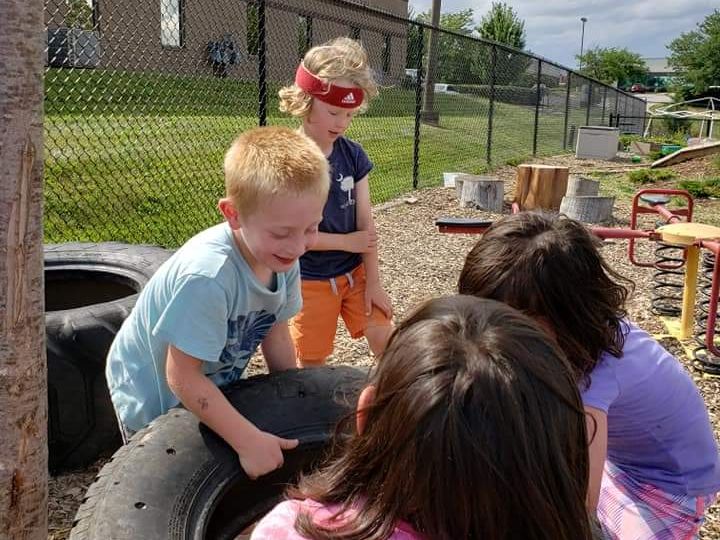
Dr. Denisha Jones, DEY Director of Early Childhood Organizing, interviews Becky Slone.
Becky Slone has worked in the field of early care and education for 35 years and has been a teacher at Providence  Childcare & Preschool for the past 7 years in Louisville, Kentucky. Providence can be described as a play-based child development center that strongly encourages children to be connected to rich playful experiences both indoors and out! The program’s passion for connecting children to play and the beautiful natural outdoor playground was one of the reasons Becky started working at Providence. Lisa Hagan, the director of the center, is an advocate for children and teachers playing together with open-ended materials both indoors and outdoors. Both Lisa and Becky work hard to share the power of play with others within their center and their community. Becky often assists new staff in learning “how to slow down and notice the details of the children playing” and thinking.
Childcare & Preschool for the past 7 years in Louisville, Kentucky. Providence can be described as a play-based child development center that strongly encourages children to be connected to rich playful experiences both indoors and out! The program’s passion for connecting children to play and the beautiful natural outdoor playground was one of the reasons Becky started working at Providence. Lisa Hagan, the director of the center, is an advocate for children and teachers playing together with open-ended materials both indoors and outdoors. Both Lisa and Becky work hard to share the power of play with others within their center and their community. Becky often assists new staff in learning “how to slow down and notice the details of the children playing” and thinking.
Most recently Becky advocated for play with her peers during a monthly meeting by sharing her experience on the natural playground, which is so lovingly called “the backyard.” On a beautiful early summer day in Kentucky, Becky’s small group of four preschool children noticed the growing leaves of an elm sapling. This small change piqued the interest of the children, and they became challenged with how they could climb the sapling. The children wanted to experience the leaves but understood that their weight would damage the tree’s growth. Canon called out to his friends, “We have to get up the tree!” The children gathered large tires and tree cookies to create a structure that was stable.
Becky watched in amazement and awe as the children demonstrated their knowledge of physics, balance and problem-solving. She listened as Canon and some of the other children used new words like “stability!” Becky witnessed the children engage in deep social relationships with negotiating their ideas.
Together they brainstormed and collaborated to use loose parts on their natural playground to create a structure that would support their weight. After completing the structure, they each gently touched the leaves and jumped off. The experience reflects true play to Becky and me because it was self-selected, self-directed, open-ended and involved some elements of risk.
Play is the most important thing we can understand, value and provide for young children to develop.
Becky, much like many teachers in the field of early childhood, is challenged with meeting the increasing  standards of education. Becky refuses to stress her children with developmentally inappropriate experiences. She sees play as a way to reduce stress and increase health. Her advice for other play advocates would be to slow down and take in the moments of true play. Her hope is that everyone—children and adults alike—can get back into nature and empowered by play!
standards of education. Becky refuses to stress her children with developmentally inappropriate experiences. She sees play as a way to reduce stress and increase health. Her advice for other play advocates would be to slow down and take in the moments of true play. Her hope is that everyone—children and adults alike—can get back into nature and empowered by play!
How have you been advocating returning true play to your classroom and school? What strategies have worked best for you and what are the benefits are you seeing? Send pictures and your story of creating a true play environment to feature in a guest blog to denisha@dey.org.







